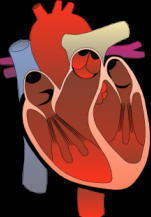
14 things Pathologists can learn from Sherlock Holmes
By Dr Sampurna Roy MD
“Nothing is more deceptive than the obvious fact” – Sherlock Holmes
I have been a fan of Sherlock Holmes since the age of twelve. If I didn’t understand something I would ask my Dad to explain. He seemed to have an answer for all my questions. My father would often laugh and say, you can also be a detective like Sherlock Holmes. As a child I thought he was joking and I would giggle and go back to reading. My father was not joking.

A few years later I visited London with my parents. I was thrilled to visit 221B Baker Street, the London home of Sherlock Holmes. My parents were amused to see my excitement during sight seeing. I remember frantically collecting souvenirs from the gift shop to make the visit memorable. I was enthralled by Baker street metro station with pipe-smoking, deerstalker cap wearing silhouettes of Sherlock Holmes covering the walls of the station. My father quietly said, you can be a very good detective if you work hard. He gave me a book which he bought in London. It was an autobiography of Sir Arthur Conan Doyle.
After reading the book I knew I wanted to be a doctor, a pathologist and a writer. There is a vast difference between wanting and achieving something. “I am still not an author of a best seller.”
I finally became a doctor and a pathologist. Life brought me right back to Baker Street. I rented a flat in Bickenhall Mansions in Bickenhall Street, located just off Baker Street. The nearest tube station was Baker Street tube station which was 5 minutes walk from the property. The tube station soon became an everyday, crowded place for me. I was no longer a tourist. I was on a mission to learn to be a “good detective” in the land of Sherlock Holmes.
14 things Pathologists can learn from Sherlock Holmes.
1) A pathologist should have an excellent mentor – Sir Arthur Conan Doyle created the famous detective Sherlock Holmes. He was graduate of the University of Edinburgh Medical School. Doyle spent nearly ten years practicing general medicine. Later, he specialized in ophthalmology. Doyle was motivated and mentored by legendary teacher, Dr. Joseph Bell, under whom Conan Doyle had studied medicine. Dr Joseph Bell was well known for keen observation of facts and power of deduction. He could reason out other facts from the one he knew. Doyle was fascinated with the incredible abilities of his mentor. Doyle admitted that Sherlock Holmes’ character was based upon Joseph Bell’s way of practicing medicine. It was Sherlock Holmes’ powers of deduction that made him the most famous detective in all fictions.
2) A pathologist needs a trustworthy, not too clever friend – A loyal, helpful friend is a blessing for a busy, ambitious doctor, to discuss his cases and brag about his successful diagnosis. Sir Arthur Conan Doyle created Dr Watson a faithful companion of Sherlock Holmes in every case.
3) A pathologist should be completely dedicated to his profession. “I cannot live without brain-work.”
4) There is a difference between seeing and observing – Pathologist should have the power of observation: “I see no more than you, but I have trained myself to notice what I see.”
Just think of the quotation when you diagnose a case of Leishmaniasis, Malakoplakia or any case of “invisible dermatosis” on Hematoxylin and eosin and later confirm with special stains. It can give you a tremendous sense of achievement.
5) Pathologist should have the power to observe and to reason: “Never trust general impression”.
“On the contrary, Watson, you can see everything. You fail, however, to reason from what you see.”
These quotations reminded me of a second opinion case I reported few years ago. He was a young Indian boy who presented with a small superficial nodule on the finger. It was reported as benign granuloma annulare. I didn’t like the look of the oval and spindle shaped cells around the necrotic areas. There were little vacuoles and areas of hyalinization. I ordered for cytokeratin, vimentin and epithelial membrane antigen. The lesion turned out to be an epithelioid sarcoma – a malignant tumour in a young 20 year old boy.
6) Pathologist should thoroughly see the slide in a systematic way, from one end to another – “Not invisible but unnoticed, Watson. You did not know where to look, and so you missed all that was important.”
Whether it is skin biopsy, soft tissue tumour or gastrointestinal biopsy it is easy to miss a small area of malignancy, mitotic figures, or microorganisms hiding behind dense inflammatory cells.
7) Pathologist should not only have power to observe and reason, he should also learn to think backwards and take past clinical history – “In solving a problem of this sort, the grand thing is to be able to reason backward.”
There are dozens of examples where previous history of malignancy has been omitted from the request form. A patient with a metastatic skin nodule with previous history of colonic carcinoma or renal cell carcinoma can completely change the diagnosis.
8) Collecting important data of the patient – “Data! Data! Data!” he cried impatiently. “I can’t make bricks without clay.” A pathologist should get as much information of the patient as possible. Pathologist should know what he is looking for and what investigation and special stains will help in reaching the diagnosis.He should talk to the patient’s family interact with clinicians and take help from the radiologist, if necessary. It is a complete team work. Facts should be gathered in details , gross and microscopic features should be correlated, extra blocks should be taken if necessary. Every detail must be scrutinized and described as accurately as possible. A systematic approach reduce diagnostic errors.
9) View of an expert Consultant – An expert in a field with several decades of experience should not take a long time to reach a diagnosis. Sorting out unimportant facts from important facts is possible by experience. “As a rule, when I have heard some slight indication of the course of events I am able to guide myself by the thousands of other similar cases which occur to my memory.”
10) Importance of Differential Diagnosis – “One should always look for a possible alternative, and provide against it. It is the first rule of … investigation. … you should never lose sight of the alternative.” All pathology residents have been warned about this important basic error. It is a common mistake to have preconceived idea about a particular diagnosis , and then trying to fit in the facts. Many newly qualified pathologists with limited experience in the diagnosis of wide range of pseudoneoplastic lesions try to match pictures from standard text books. Not all tumours look same. Many benign lesions can mimic cancer and vice versa creating a diagnostic dilemma. “It is a capital mistake to theorize before you have all the evidence.” Think like Sherlock Holmes and solve the puzzle.
11) Approach to final diagnosis in a complicated case – “How often have I said to you that when you have eliminated the impossible, whatever remains, however improbable, must be the truth?”
Sounds familiar ? Yes indeed, in many rare cases pathologists often have a long list of differential diagnosis and reach the final diagnosis by process of elimination. It is important not to ignore the result even if initially it seems unlikely.
12) Pathologists should constantly update their knowledge – Read latest journals and books. Sherlock Holmes had vast collection of books, got evidence based information from local library or other reliable sources.
13) Pathologists should show empathy – Sherlock Holmes was warm, kind, attentive and committed to his clients. He treated member of the royal family or a poor governess with equal respect, kindness and sympathy.
14) Pathologists, in any part of the world, should have knowledge about Tropical Diseases – Sherlock Holmes described many tropical diseases in his adventures, like tetanus, septicemic plague and leprosy. The origins and routes of transmission of tropical infections were subjects of investigation in many of his stories. He introduced the term “tapanuli fever” in ‘The Adventure of the Dying Detective’ which is probably melioidosis.
A Scientific Detective’s Approach to diagnosis in Pathology:
– A methodical and logical approach to the slide
– Aware of clinical history and other related information
– Necessary investigations including special stains and immunohistochemistry which finally lead to the correct diagnosis.
– Final conclusion is based on correlation of data and observation of minute details of the case.
Sir Arthur Conan Doyle was a medical doctor, creator of Master Detective Sherlock Holmes, author of best sellers. He is an inspiration to doctors who enjoy writing.




































